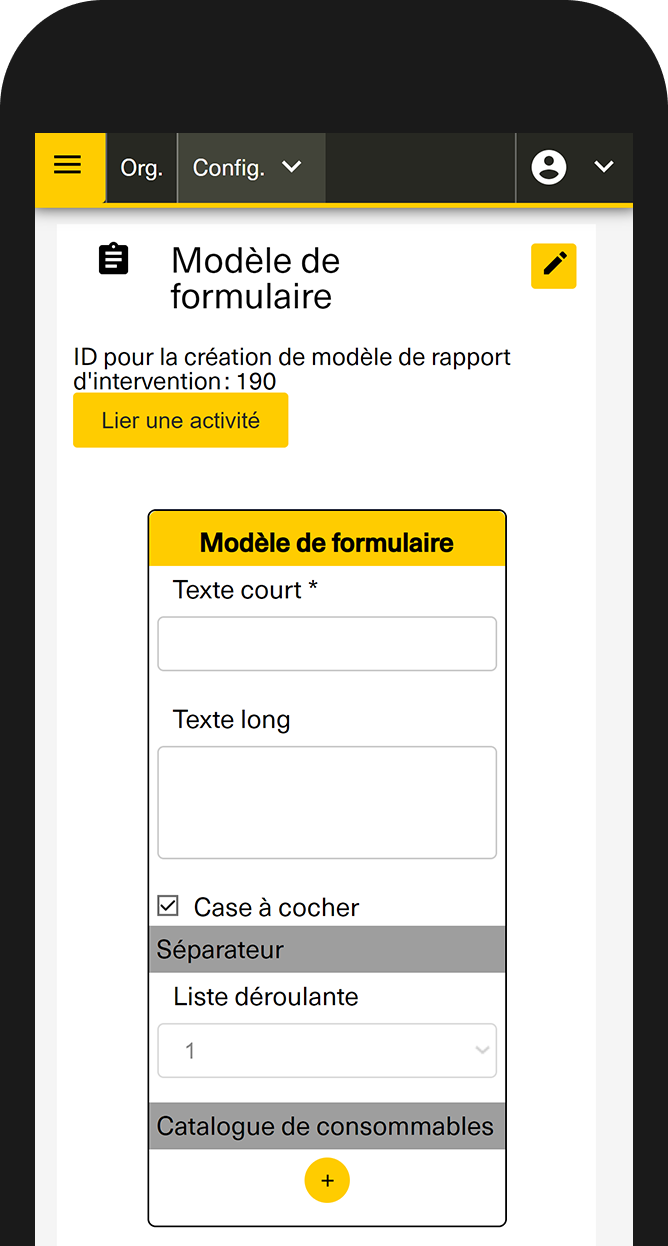When working in field services, reports are the most important and tedious task of all. So how can you improve your field service reports making them both easier to prepare and better for the analysis. Through this post, I will give you 7 tips to improve your field service reports.
7 Tips to Create Absolutely Perfect Field Service Report

1. Keep the human factor in mind
For an organization, asking operators to write field service reports can be tricky. Who wants to complete reports after a day of outside work? Or a night of work in the rain? No one! And guess what, just giving the order without providing context never works. Who would have thought?
So, what can you do? First, you need to understand the reality of the work of your team. Honestly, you probably already know it, but a refresh is never a bad thing. If you want your field service report filled, you don't have a choice. You need to understand how you can best integrate this work into your team's workflow.
For field operators, creating reports is extra work they don't necessarily want to do. So, to make sure they are on board with it, you need to demonstrate to them why field service reports are beneficial for them and you and what you will do with those reports.

Equally important, you need to use tools that will make their lives easier. Because if it's easy for them to write reports, you will have all the data you need. And you will never have to ask for field reports to be completed. To make this utopia possible, you need to carefully select the tools you will be using for your field service reports. No one wants an ugly interface where you cannot find the information you need. We all want a clear-cut experience to get directly get the information we need.
Through the years, we have gathered plenty of experience in field service reports. Those years taught us a lot about the best tools and systems to use for your field service. And through the following 6 tips, I will share this experience with you. Hopefully, those tips will help you receive detailed field service reports.
2. Create straightforward field service reports
Ok! This tip might sound obvious. However, it's necessary to emphasize this point. Make your field service reports as straightforward as possible. The more details you have in your form, the hardest it will be to fill. And guess what, if it's hard or long to complete, nobody will do it correctly. Less data is better than no data.
To know what information you need in your reports. Start by asking yourself some questions:
- What is my final goal with those data?
- Do I want to archive this field report?
- Do I use my field report to charge customers?
- Do I use it as proof?
Based on what you want to do with your field service report, you can determine which data you need. With your goal in mind, start by listing all the information you need. You can list all of them as they come to you. Once your list is complete, enter an importance level between 1 and 5 (5 being the lowest importance and 1 the highest importance) next to each element.

Now, let's start by building a field service report for the high-importance elements from your list. For each of those, you can now select the best way to collect the information. Should the operator write a text, check a box, check multiple boxes, select one element in a list? There are several solutions to collect the same information. Think about which one is easier for your operators. For example, you create field service reports to gather information about projects. If you have three projects, put checkboxes in your field report instead of an input field. Since it takes less time to select, you increase the quality of the information you collect.
Next to each element of your list, you can indicate what type of element (checkbox, input field, etc.) you use to collect the information. Thanks to this list, you can quickly create your field service report. You are now ready to build your report. Be careful not to incorporate too many details in the first version. You should always start small with the most important elements and expand later.
The following tips give you pieces of advice to create and generate your field service reports. But you can also use pen and paper, sometimes that's all you need. While pen and paper are fine for many use-cases, it causes more work down the road to archive it, produces invoices, or input the data on a computer. In my experience, it's not a bad idea to look at some simple digital solutions that exist to help you in this process.
3. Have a simple and robust sharing process
The second critical difficulty is sharing your field service report. From the operator writing the field report to the manager analyzing it, you have a high risk of losing the information.
And as you can easily guess, if you are doing everything on pen and paper, the process to share the field report must be airtight. And even if it's robust you always risk losing some field service reports. The easiest solution to share your report is for your operators to drop the field report in a dedicated mailbox in your office. However, the best process to share them depends a lot on your company.

As simple as your process is, make sure to write it down and share it with everyone. Since we all tend to forget processes, just telling it is not enough. Write your process down, share it with everyone and have it on display in your workshop or office.
But the best sharing process possible is if you have a solution doing it automatically for you. You do not need to remember to share your field report. However, it requires you to move out from pen and paper and PDF forms and use native digital solutions.
With a digital solution, worrying about the transmission of information is no longer a problem. Or more precisely, it's no longer your problem. It's your provider's role to ensure that the data are transmitted. Furthermore, a resilient digital solution makes the transmission of your field service reports automatic so that neither your operators nor your managers have to worry about it.
Let's go into more details about digital solutions for your field service reports.
4. Report your field services with a digital solution
In the previous section, we briefly talked about digital solutions to report your field services. In this section, I want to address this in more detail. What can you expect from it? What are the pitfalls?
But why going digital when you could do it with pen and paper (or through PDF and Word forms)? Because with those kinds of homemade solutions, you are responsible for everything. Yes, you have nothing to pay but what you have is problems. With a DIY solution for field service reports, you are responsible for the transmission of all data. You have to ensure that operators write their field reports, share them with their manager, archive them, etc. Doing this can quickly become overwhelming. For this reason, you should implement a digital solution managing those problems for you.
What you can typically expect from software for your field service reports is a solution :
- Gathering data about your field operations for you
- Customizable to your needs
- With a built-in, customizable field report feature
- Automatic transmission of the field report from the operator to the manager

When searching for solutions for your field service reports (or any other kind of digital solution for that matter), search for something where you can start small and grow. Some digital solutions are tiny. They are very good at doing one thing, that's all. Some other solutions are doing a lot of things. But finding your way through their mess can become nearly impossible.
The ideal solution offers you a basic canvas to quickly start doing field service reports. With a couple of clicks, you should be able to report data from the field. You can then use it for a couple of weeks with simple field service reports. Later, with more experience, you can build up your field report to save all the data you need.
You should also keep an eye if the solution provides you with a way to export your data or to integrate this solution with another digital solution through an API. While those things might not be beneficial for you right now, they offer you room to grow. Secondly, they ensure you can connect your digital solution for field service reports with any other tools or solution you may buy.
Usually, a suitable digital solution for field service reports enables you to do more and automate some tasks. In the next section, we go through the possibility of doing something automatically.
5. Select a solution automating part of the work for you
When you are doing everything by hand, you have to input every single piece of data yourself. That's not very efficient. With a digital solution to generate your field service reports, you usually do not have to input everything yourself. So what can you expect from such a tool :
- Geo-location of everything you do
- Input all your activities
- Record materials and consumables you use
- Fill in forms or on-site reports
- Register notes with text, audio, video, or image
- Export everything in custom-made reports
As you can see, you can expect a lot from a digital solution for your field reports. What's interesting for you about such a system is that you can automate several tasks. Let's take a basic example. You are doing some maintenance works on the field. During your shift, you operate on several sites. By the end of the day, you have to write a report for all the maintenances you have done. In every field service report, you are supposed to enter information about the project, the consumable items you used, and attach a picture of the work you have done. Should you do that by hand, it is going to be a nightmare. You need several documents; a way to share those documents, a way to share the pictures, and you must remember which image was taken where. A lot can go wrong. But the same thing with software offers a smoother process. While on the field, you snap a picture that gets automatically located at the place you took it. And using a form, you report information about the maintenance work you have done. The software geo-locates everything for you.
But it's not only better for reporting data from the field, it's also way better for the analysis. You don't have to decrypt awfully complex field service reports and match them with pictures. You no longer have to archive everything in your document and manually create an invoice for your customer. You can analyze the complete field report directly on your computer and sometimes even on your smartphone. All field service reports are then automatically saved and you can export every report in a shareable format.
With a digital solution for your field service report, not only do you save time, but you also work better. To go the extra mile and improve your processes, you need a digital solution customizable to your need. And that's our tip number 6!
6. Choose a solution with smooth report templating
When you select a digital tool to manage your field reports, you want a rigid system offering no way to tailor the experience. That's why you must choose a tool with customization possibilities for your reports.
Why are you doing field service reports, what you want to report with them, or how you want to report it is usually personal to you. Your needs and your processes are different in every organization. That's why you need a solution that you can adapt to you. At first, it might seem like more work since you usually have a few elements to set up before starting. But with time, your needs change. And being able to keep tailoring your solution to your needs is a long-term advantage.

The risk with customization is that the solution might end up awfully complex. So keep an eye on how the solution works and how you can create your custom field services reports. Here are a few things to pay attention to :
- Can I try it for free? If yes, it's great because you can directly test the solution. Try to create your report for field services.
- Is it easy to edit my field report? That's an important point. You do not want a system where you need hours to add one piece of information.
- Is there any available courses? Knowing if you can rely on some courses and helps to assist you in building your field service report, is key for efficient use of your solution.
- Can I export my field report? Who wants a system where you cannot get your data. Look for a digital solution where you can export your report and tailor them to your needs.
7. Get started with better field service report for free
That why we created bMoves the solution offering you a great way to manage your field services. Through our mobile application, you can log everything you are doing on the field. And if you have vehicles, you can automatically integrate them to the same intervention to get their data. For a perfect analysis, bMoves places everything you do on a map.
With bMoves, you can analyze every field service report directly displayed on a map. And with one click, you can generate a downloadable and editable document. Not only can you view what is currently happening in your organization, but you can also view what happened up to 10 years in the past and replay the situation as if it was live.
And even better, everything you do with bMoves, you can customize to your needs. Thanks to our user-friendly management tool, you can customize your field service reports to your needs. With bMoves, you have complete control to get the most out of your digital solution!